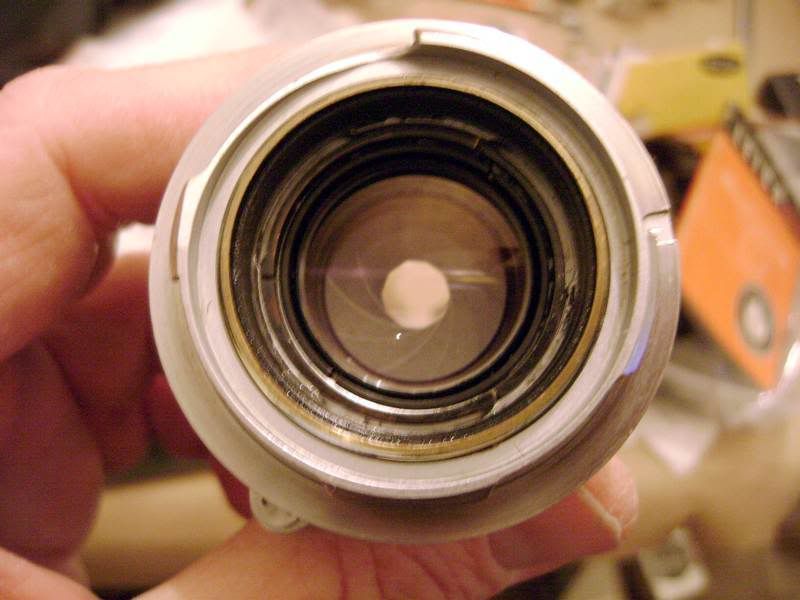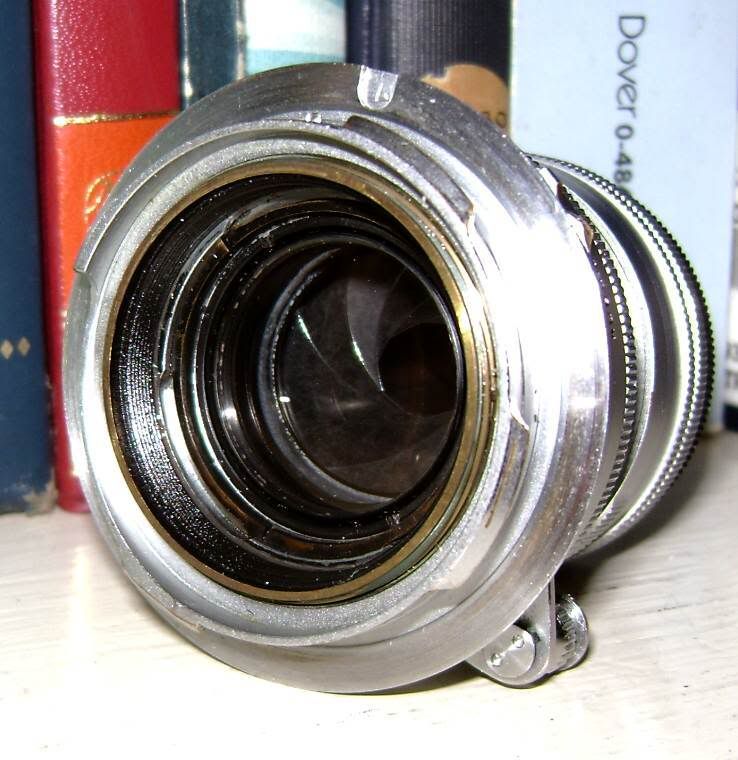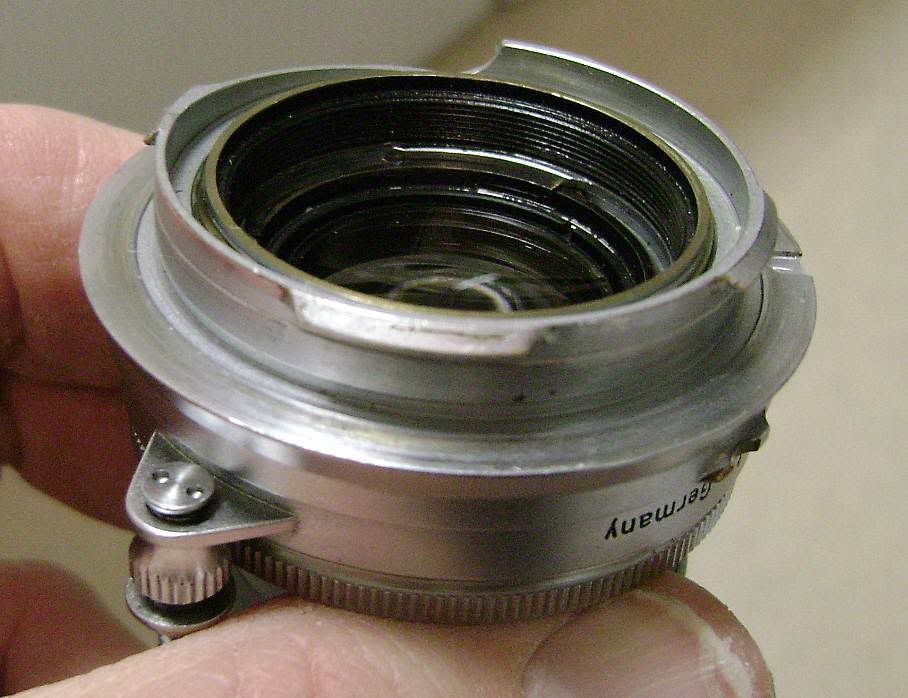Joe, I nlooked at the pictures. I know which bayonet lug surface is involved, having done the file work on a 40mm Summicron. I didn't see any obvious damage or wear; but if you are satisfied that you know now which lug it is, looking at its "leading edge" surface and see if there is still chrome, or if brass is showing through. If the chrome plating is still there, I would suspect that the lens is not the culprit. I have to file fully through the chrome plating to get the 50mm frameline to go away; and I have to file even more before the 35mm frame comes into view. The amount of material removed is not great, but it is significant. I just measured the flat part of the lug on my 50mm Collapsible Summicron (M-mount) and the length of the same surface on my modified 40mm Summicron. The difference is 1/32 inch. The 50mm measures right at 1/8" and the 40mm modified one measures about 3/32" about a 1/32 difference. Removing any less than that 1/32 inch was not enough to bring up the 35mm frames. So unless it looks like the chrome is all gone from the lug end, I wonder if the frameline mechanism is out of adjustment. I read what you wrote about the adapter bringing up the 50mm frames, which would argue that the camera is not the culprit; but could you check to see if there's any bare brass at the lug end? I tried to compare the photo with my lenses, but the scale is different, and I'm not sure if that lug looks too short, or not.






